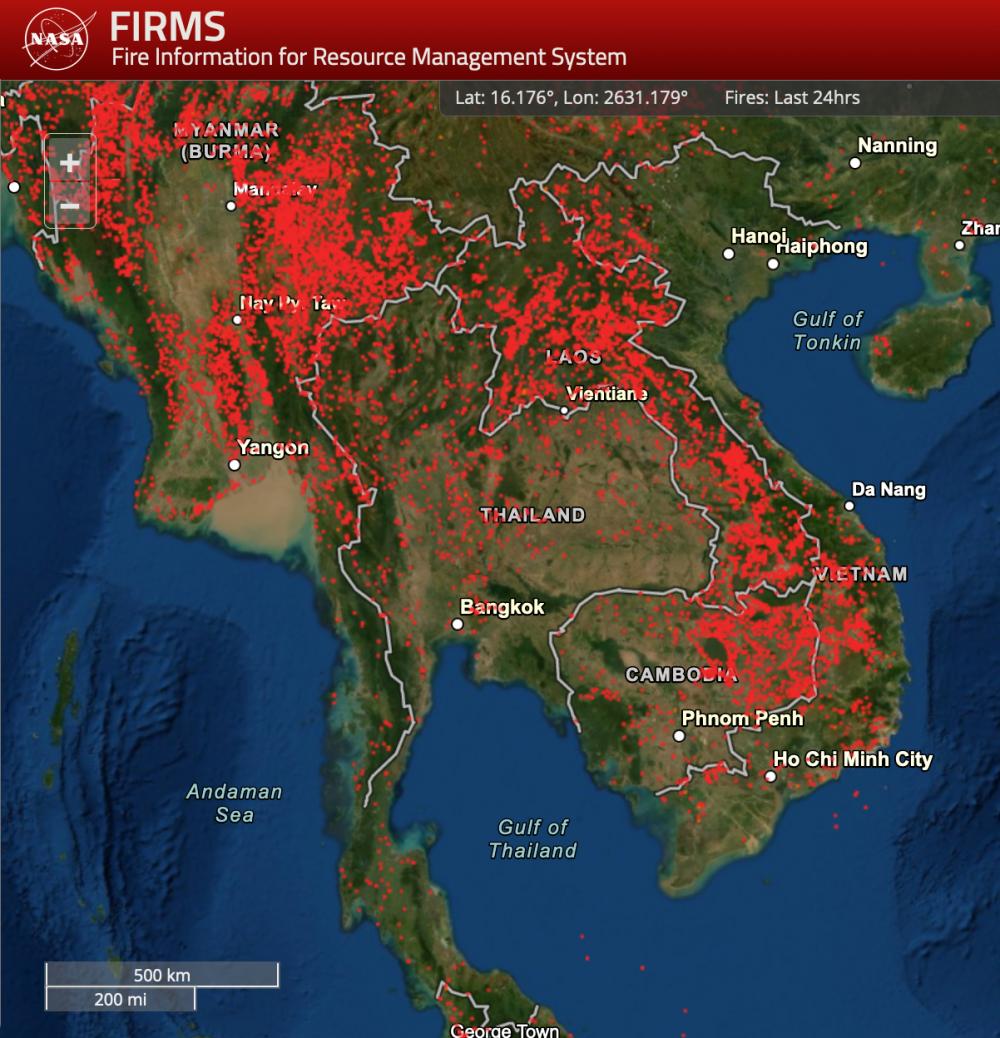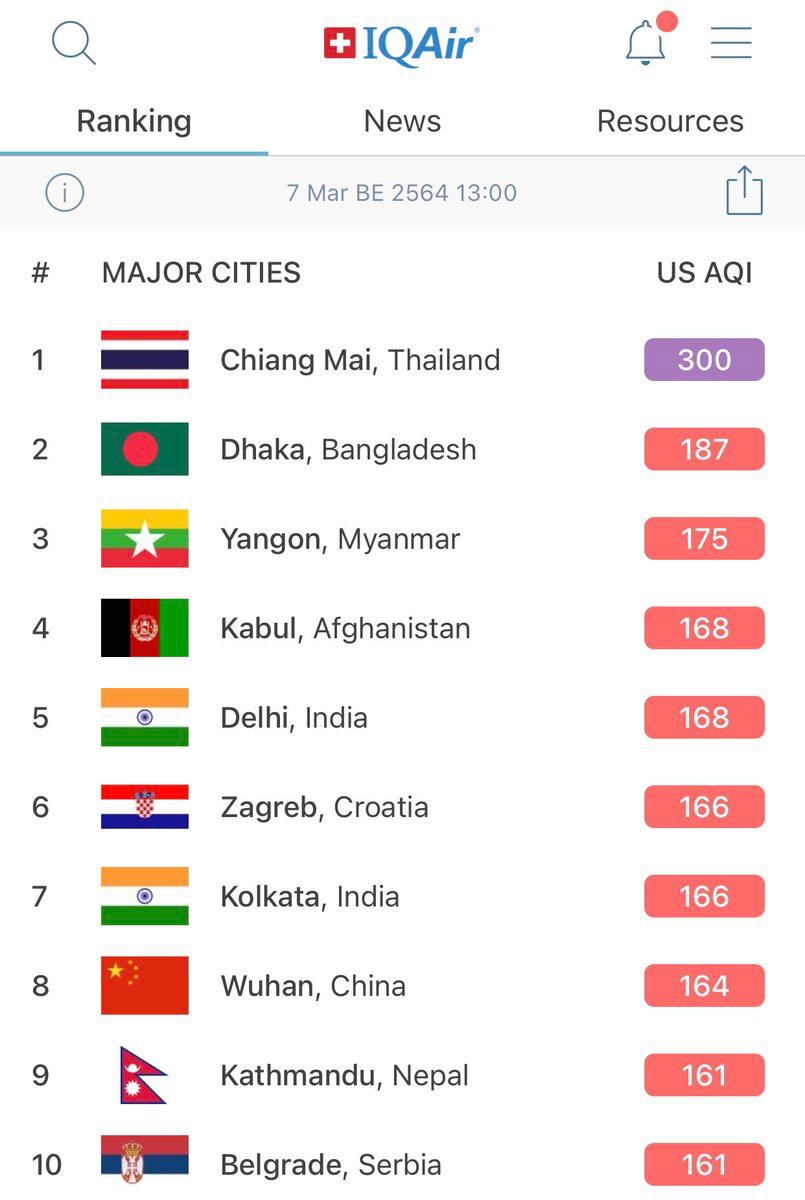On Earth, there are over 7 billion people but very few of them have a clear vision of a future and how important air quality is for our health. You will find politicians that are unwilling to enforce air quality laws, you will find educators scared to share with parents the indoor air quality, and you will find lots of people unaware of what they breathe or what they burn.
Among all of them, you will find very few people that want to make things right for the rest. In this case, the Head of School at Prem Tinsulanonda International School in Chiang Mai, Thailand was brave and educated enough to recognize the power of air quality data.
Chiang Mai is a city in exotic Thailand that always ranks in the top polluted cities in the world between March and April. The reason is the burning season. I was taught about the 4 seasons (Spring/Summer/Autumn/Winter) at school but it turns out that they have a fifth season − normally in March and April − when crop waste burning and forest fires fill the air with particles, PM2.5 levels can reach 300 μg/m³.


Schools are closed during that period and to be honest, I don’t understand the reason. Most families cannot mitigate the pollution, and we know that what is outside is inside. Do kids stay indoors with air purifiers waiting for when the burning season will end in order to go outside? I doubt it!
More than six years ago, the school installed air purifiers in all classrooms but that was not effective enough for a few reasons. Firstly, kids move between classrooms, and the doors open and close constantly. Secondly, because CO2 and VOCs were building up in classrooms. The air purifiers had a hard time purifying the air plus if you increase the speed, they tend to become loud.
Then they realized that it was very important to properly monitor the air quality in the classrooms in order to quantify the pollution they are exposed to and compare it against the outdoor air quality. So they turned to AirGradient, which has developed the AirGradient platform and monitors specifically designed for schools.
The previous Head of School at that time was reluctant to publish comprehensive data about the situation inside the classrooms, as a result, many parents got extremely worried about the health of their children unsure whether they should send their kids to school or not. The impact on teaching was huge (constant changes of schedules, noisy air purifiers, etc), extremely resource-intensive to manage the situation.
However, with the new Head of School Rachel Keys, Prem took a new and very proactive step in handling the air quality.
Under her new leadership, Prem also started looking for solutions beyond air purifiers (as they failed on highly polluted days) and found out about positive pressure systems (PPS) in classrooms through the International School of Bangkok (ISB). The vendor, Environment Assured visited Prem subsequently and installed the system into four classrooms as a trial.
It became apparent that the classrooms with the positive pressure system (PPS) performed extremely well and kept the PM2.5 levels near zero on the worst polluted days without compromising in CO2 as new air is introduced constantly in classrooms and now they meet international standards. Classroom S22 uses the PPS and classrooms EY3/S37 conventional air purifiers.


After this successful trial, Prem decided to equip all its main classrooms, common areas and sports hall with positive pressure systems which happened in September 2020.
Most importantly, the school shares all this information publicly with parents and kids on their website. As a result, admission requests have skyrocketed at Prem, and everybody wants their kid to attend this school.
The school is very conscious about the importance of clean air and they initiated the Chiang Mai School Group for Clean Air connecting the international schools in the city to work on increasing awareness and work on inter-school projects together. Moreover, Prem also started to work on a student project with NARIT (National Astronomical Research Institute Thailand) to explore PM2.5 levels on different mixing heights in the atmosphere. It sends a PM sensor up on a weather balloon connected to a ground station through a LoRa connection.
I would like to mention that AirGradient provides the schematics and instructions to build a DIY low-cost indoor air quality monitor, so schools can take advantage of this opportunity and build with students their own classroom-ready Indoor Air Quality Monitors. Read more here.
Positive pressure systems combined with indoor/outdoor air quality monitoring systems have been proved to work like a charm. Schools that are brave enough to face the truth were able to mitigate indoor air pollution and help kids grow and learn correctly. Their success must be an example to be followed.
Discover more from See The Air
Subscribe to get the latest posts to your email.


I work at Prem school and I cannot believe how good this system is! We previously worked in Hong Kong and the pollution made me so sick. I suffer from allergies and asthma. When we were looking to move to Prem the only thing that put me off was the burning season. Rachel assured us that the PPS system was in place and was excellent! She was absolutely right and my children and I breathe clean air every day!
LikeLiked by 1 person
Hi Sotirios, thank you for mentioning our DIY sensors. I am more than happy to send any schools that would like to build these DIY sensors free PCB boards. Just contact me at support@airgradient.com
LikeLike
Reblogged this on CleanAir in Greece and commented:
This successful school AQ project sets a perfect example to be followed in our Greek schools
LikeLiked by 1 person
Great to hear about the possibility to achieve near zero AQI in classrooms even in areas of very high air pollution with the help of positive pressure systems. I hope many schools in polluted areas will follow Prem schools example.
LikeLiked by 1 person